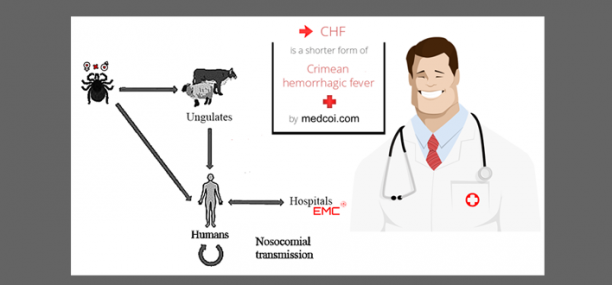Crimean hemorrhagic fever (CHF)
Crimean hemorrhagic fever (CHF, КРЫМСКАЯ ГЕМОРРАГИЧЕСКАЯ ЛИХОРАДКА, الحمّة الكريمية) is a widespread zoonotic tick-borne viral disease that is endemic in Russia, central Asia, Africa, and less commonly in the Balkans, and the Middle East. CHF causes symptoms such as fever, muscle aches, dizziness and decreased consciousness, photophobia (abnormal sensitivity to light), etc. if not treated properly it can lead to death, it is important to mention that CHF is asymptomatic in infected animals.
Pathogen – a virus of the genus Nairovirus
Epidemiology
The source of infection – animals
Mechanism of transmission – through the bite of ticks.
Clinical picture
The incubation period ranges between 1 to 14 days, Start acute.
Clinical manifestations are similar to HFRS, however, the diseases itself is more severe.
Renal Syndrome is less expressed while hemorrhagic syndrome is expressed heavily; the clinical picture my show intestinal and stomach bleeding.
Hemorrhagic syndrome starting from the 2nd-4th days of the disease, punctulated rash, petechial, sometimes presenting in the form of chains and bands.
Hemorrhagic enanthema showing in the 1st 2-4 days of the illness on the palatine mucosa (mucosa of the soft palate), Moreover, bleeding in the sclera, nasal bleeding, uterine bleeding, and gastrointestinal bleeding may be observed.
Diagnosis and treatment are similar to those in HFRS.
The most frequent complication – an infectious-toxic shock syndrome.
For the differential diagnosis, and treatment, see HFRS..
Verified by: Dr.Diab (January 7, 2017)
Citation: Dr.Diab. (January 7, 2017). Crimean Hemorrhagic Fever Epidemiology clinic and treatment. Medcoi Journal of Medicine, 4(2). urn:medcoi:article16263.














There are no comments yet
Or use one of these social networks